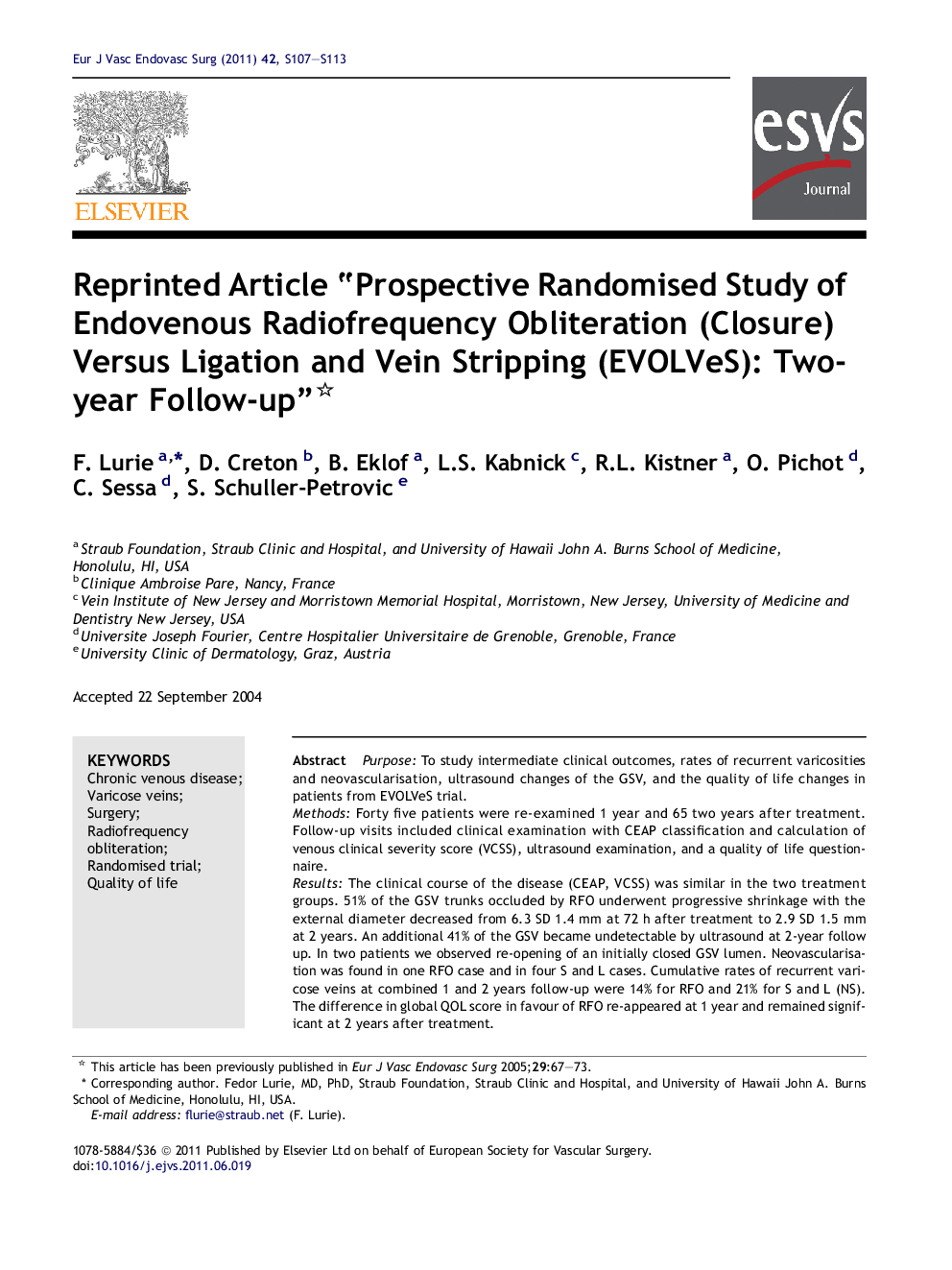| کد مقاله | کد نشریه | سال انتشار | مقاله انگلیسی | نسخه تمام متن |
|---|---|---|---|---|
| 2913405 | 1575490 | 2011 | 7 صفحه PDF | دانلود رایگان |

PurposeTo study intermediate clinical outcomes, rates of recurrent varicosities and neovascularisation, ultrasound changes of the GSV, and the quality of life changes in patients from EVOLVeS trial.MethodsForty five patients were re-examined 1 year and 65 two years after treatment. Follow-up visits included clinical examination with CEAP classification and calculation of venous clinical severity score (VCSS), ultrasound examination, and a quality of life questionnaire.ResultsThe clinical course of the disease (CEAP, VCSS) was similar in the two treatment groups. 51% of the GSV trunks occluded by RFO underwent progressive shrinkage with the external diameter decreased from 6.3 SD 1.4 mm at 72 h after treatment to 2.9 SD 1.5 mm at 2 years. An additional 41% of the GSV became undetectable by ultrasound at 2-year follow up. In two patients we observed re-opening of an initially closed GSV lumen. Neovascularisation was found in one RFO case and in four S and L cases. Cumulative rates of recurrent varicose veins at combined 1 and 2 years follow-up were 14% for RFO and 21% for S and L (NS). The difference in global QOL score in favour of RFO re-appeared at 1 year and remained significant at 2 years after treatment.ConclusionThe 2-year clinical results of radiofrequency obliteration are at least equal to those after high ligation and stripping of the GSV. In the vast majority of RFO patients the GSV remained permanently closed, and underwent progressive shrinkage to eventual sonographic disappearance. Recurrence and neovascularisation rates were similar in the two groups although limited patient numbers prevent reliable statistical analysis. Improved quality of life scores persisted through the 2-year observations in the RFO group compared to the S and L group.
Journal: European Journal of Vascular and Endovascular Surgery - Volume 42, Supplement 1, September 2011, Pages S107–S113